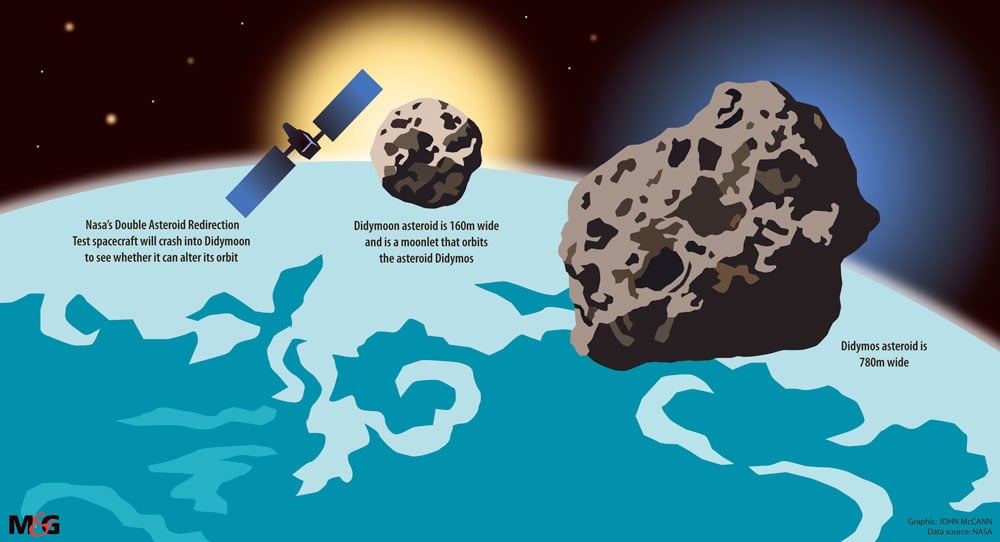(John McCann/M&G)
Imagine a world where we all come together and get carbon emissions to zero by 2050. A world where global warming stops at 1.5°C and life continues as it does now. All highly improbable, but a rather nice idea.
Now imagine celebrating this hard work and then a rock the size of a Free State town crashes through the atmosphere and smashes into the ground.
Everyone under the rock is killed. Everyone near it is vapourised. Then the rest of us die off as clouds block the sun and plants stop photosynthesising.
We’re not good at learning from the past. But the idea of repeating the whole dinosaur-extinction thing has sufficiently concerned enough people that we now have a working plan for saving the Earth.
First up was identifying the problem.
Our atmosphere is great at breaking small asteroids into little bits. It’s when these speeding masses of rock are more than a kilometre in diameter that they cause what Nasa calls “global effects”.
To find these killer asteroids — and fund the people dedicated to saving us — Nasa set up a Planetary Defence Co-ordination Office in 2016.
It’s made up of people who go to work every single day with the goal of saving the planet on which we live. They’ve helped to identify 93% of the objects that are big enough to threaten our existence.
If one of these has a 1% chance of hitting Earth in the next 100 years, the office has to alert the United States Congress, the president and other organs of government.
The Earth being hit by an asteroid happens more often than is safe for a species that has no defence. The Lunar and Planetary Observatory at the University of Arizona estimates that Earth has been hit three million times by asteroids that left craters larger than 1km in diameter.
South Africa has a few of these craters: Tswaing near Tshwane was caused by a meteorite only 50m in diameter, and the meteorite that created the Vredefort crater in the Free State was about 15km in diameter.
Vrede was one of these meteorites with “global effects”. They’re the ones that need a solution. So space agencies such as Nasa have started to scratch their heads and get teams to work out the best way to destroy one.
The options range from a Hollywood-style solution of smashing nuclear weapons into an offending asteroid to nudging a potential planet-killer off course.
To test the latter option, Nasa and the European Space Agency have picked a duo of inoffensive rocks bobbing about in space just 11-million kilometres away. The smaller one — Didymoon — is the size of the Great Pyramid of Giza. It poses no threat to Earth but will be sacrificed for our future survival.

Didymoon is one of an estimated 30 000 asteroids that are smaller than the “global effects” rocks but still rank as having “city-killing” capacity.
Nasa’s plan is to crash its 500kg probe, the Double Asteroid Reduction Test (Dart) probe, into Didymoon at a speed of 6km a second. This will lead to an almost infinitesimal change in the speed and direction of Didymoon. But, when you’re talking about things in space travelling millions of kilometres, the slightest shift can put things off their Earth-smashing course.
The crash will also leave a 20m hole in Didymoon. A probe from the European Space Agency will send CubeSats, miniature satellites each the size of a briefcase, to that hole to see the inner workings of the space rock. Arriving after Dart has its crash, these CubeSats will also help to work out whether we’ve found a way to knock asteroids off course.
Dart will hit Didymoon in October 2022. If everything works out, we’ll be able to scratch off another potential crisis and return to keeping this Earth place healthy and ticking along.